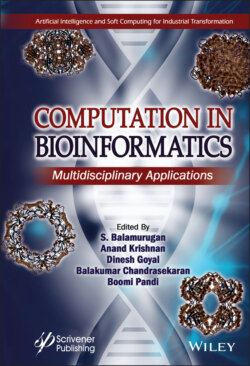Читать книгу Computation in BioInformatics - Группа авторов - Страница 41
2.4 Role of OMICS Technology
ОглавлениеPresently, current pharmaceutical businesses are confronting unsustainable program disappointment in spite of critical increments in venture due to waning revelation pipelines, quickly growing R&D focuses, increasing spending plans, expanding administrative recording systems and expenses, and foresee noteworthy holes later on tranquilize markets. The procedure of drug discovery from idea to commercialization is dull and extensive and adds to the extending emergency. The animal models which are accessible now a days which are foreseeing clinical interpretations are basic, exceptionally reductionist and, subsequently, not fit for reason. Presently, there is obstruction produced for different illness like jungle fever, tuberculosis, and HIV which prompts calamitous results of expanding steady loss rates. The transitioning of omics-based applications makes accessible an imposing mechanical asset to additionally grow our insight into the complexities of human illness.
The institutionalization, investigation, and far reaching examination of the “information substantial” yields of these sciences are for sure testing. A reestablished spotlight on expanding reproducibility by understanding inalienable organic, methodological, specialized, and diagnostic factors is urgent if dependable and helpful inductions with potential for interpretation are to be accomplished. The individual omics sciences—genomics, transcriptomics, proteomics, and metabolomics—have the solitary preferred position of being complimentary for cross approval, and together might empower a genuinely necessary frameworks science point of view of the bother’s fundamental malady forms. In the event that current antagonistic patterns are to be turned around, it is basic that a move in the R&D center from speed to quality is accomplished. Omics advances are an essential piece of educated pharmaceutical R&D, and their job in R&D will keep on growing. There are still difficulties to be routed to completely use omics advancements, particularly for treating complex maladies, for example, neurological and immune system illnesses (Figures 2.2 and 2.3).
Figure 2.2 Integrated OMICS in drug discovery.
Figure 2.3 Role of integrated omics in clinical biology.
Just to give some examples. How to build up omics information norms to diminish between lab changeability and to expand trust in particularly characterizing illness subtypes to help the plan of clinical preliminaries? How to translationally connect omics information in obsessive conditions and clinical phenotypes of individual illnesses? How to coordinate different layers of omics data and phenotypic portrayals, including neurotic biomarkers of a malady, pharmacodynamics reactions to a medication treatment? How to interface omics information to cerebrum pictures or subjective scores for neurological or mental sicknesses? Computational and factual strategies will without a doubt keep on assuming a job. Looking forward, quantitative frameworks pharmacology may help cross over any barrier. It is foreseen that the atomic systems portrayed by omics information and the physiological/obsessive systems displayed by clinical tests/analysis will be quantitatively coordinated to educate R&D.
As biomedical advances develop, omics advances should be coordinated with new advancements. The advances of a malady on-chip are not too far off. A malady on-chip is a novel living infection model that can be developed to catch the neurotic highlights of an illness over the span of its common history and to connect omic profiles and clinical phenotypes. Related to tests for transcriptomics, proteomics, microRNAs, and post-translational alteration data, illness on-chip advances can uncover the sub-atomic etiology of a malady, distinguish tranquilize targets, and, above all, uncover the reactions to a medication over the frameworks (viability and security). Alzheimer’s sickness is a model where an infection on-chip can be instrumental. A few hereditary changes in the β-amyloid forerunner protein quality have been recognized in familial Alzheimer’s sickness. Possibly, utilization of hereditary control to actuate explicit changes of cells and make explicit malady on-chip probably would not be implausible. Sooner rather than later, a 3D Alzheimer’s sickness “cerebrum on-chip” will build our capacity to decide the atomic systems related with its etiology and to find a novel therapeutic item to forestall its beginning and additionally capture its movement.
